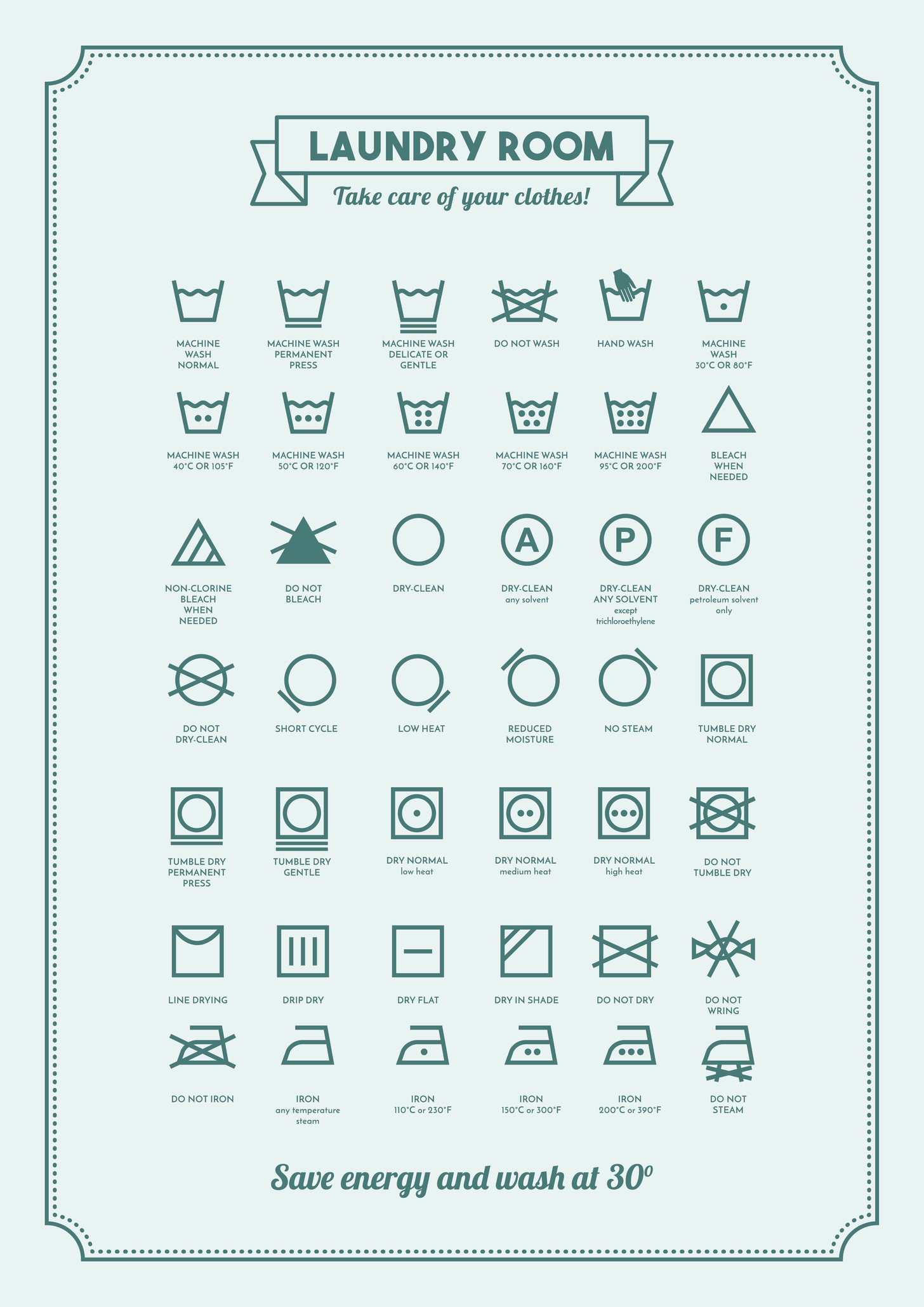Table of Content
Pay careful attention to the type of fabric that your garment is made of, because that will help you determine how you should proceed. Before you get washing, you need to check your garment's label and take note of the material. To create crisp collars, cuffs, pleats, or lapels, you'll need to use an iron.
Wash garments by hand or turn the washing machine to delicate cleaning settings. For clothes with the dry clean tag however, feel free to wash them using a machine or by hand. They’ll easily take on this method with little consequences. Also, you may find some garments with the messages “hand wash only” or “machine wash only”, and then underneath them are various instructions on how to wash them. Always follow these instructions for proper maintenance of your fabric. An ounce of prevention could be worth a pound of dry-cleaning receipts.
Clothes are dry cleaned.
Follow the six steps below to determine what to wash, which cycle and water temperature to choose, what kind of detergent to use and how to best prepare your clothes for the washer. Most people make the mistake of lumping all of their delicates into a single wash in their washing machine. They end up mixing cashmere with lace, knitwear with polyester, or linen with velvet, leading to unfavorable results. While washing all your delicates at once may seem like an expedient process, it actually does more harm than good. Because delicates tend to easily snag and lose shape when washed with unlike fabrics. You could also use our laundry bag for delicates to separate out items of the same color and prevent mismatched fabrics from tangling.

Alternatively, you could spread your garment on a taut netting with space underneath . Take extreme care to point the steamer wand away from your body and never touch the head of the steamer. You may also opt for hand steaming with a hand-held steamer. Use the pre-treater included in the kit to treat any stains.
This Laundry Expert Says You Can Wash Dry-Clean-Only Clothes at Home (Without a Kit!)
Keep a stain-remover pen for quick fixes in your pocket or purse. Hand sanitizer, which contains alcohol, is another handy item to keep on hand, along with a few cotton balls or an old-fashioned white handkerchief to apply and blot stains. Lay each garment on a clean towel and roll to up to remove excess water. Fill a sink or large bowl with cold water and add the amount of detergent specified by package directions.

Avoid putting wool garments in the washing machine, since the agitation of the machine cycle will likely result in felting and shrunken garments. Pretreat any stains with mild and unscented soap or shampoo by putting a drop of soap directly on the garment and rubbing it into the stain. Turn your garment inside out to protect it and place it in a mesh laundry bag. Here are more instructions on how to dry clean your clothes at home like a pro. Any cloth having the “do not dry clean” message should never be dry cleaned.
Treating bad stains and odours
Use a mild detergent in a tub of cold water to hand-wash your linen garments. They may get wrinkled if you don't press them right after the hand-wash.You can let your linens air dry on a clothes line. Lugging your clothes to the dry cleaner every month can be a pain. There are only so many times you can re-wear a shirt before it starts to smell.
With a little prep, laundering your favorite fine fabrics can be a breeze. Always use the air fluff setting instead of the heat setting. If you're just drying one thing, start with minutes and then see where it's at. Make sure you're monitoring the garment—don't just turn the dryer on for 45 minutes and walk away or your clothing could end up shrunken or faded. Washing machines have a range of options for the speed and force that they use to wash your clothes. Delicate fabrics like silk, for instance, do not benefit from prolonged exposure to water.
Can you hand wash dry clean only clothes?
It also illustrates how important it is that we be our own advocates when it comes to matters of health and safety! Unfortunately our regulatory agencies are failing us in this regard - both in terms of educating the public on risk vs. benefit and keeping us safe from these hazardous chemicals. Our goal is to create a positive relationship with beauty. AMFAM will empower its readers to not be intimidated by models but rather inspire them to enrich their lives with fashion tips and lifestyle advice. There’s some amount of agitation there that may cause tearing or distortion of the fibers at the microscopic level which gradually transits outwards and cover a much broader scope. The end result is a distorted or even torn out fabric.

Now, that doesn’t necessarily mean everything they use is 100% safe or natural. However, it should be safer than what a conventional dry cleaner uses. The only way to know for sure is to call them up and ask them about everything they use. Which wrings out the clothes between two rollers as you hand crank it. Yes, it’s old fashioned but it can really save a lot of drying time!
If necessary, you can spot clean by adding a drop of your soap directly to the stain. Use your fingers to gently rub the soap into the stain. You can put them on a clothesline, hang them over a banister on your porch or deck, whatever works to help them air out effectively. It must be hand-administered only with a white cotton cloth in a well-ventilated space. Use protective gloves and a face mask so you don't inhale the fumes.
This step is particularly important for oily, adhesive, or paint stains. As long as you use the proper techniques, both standard washing and dry cleaning will leave your fabric materials clean, pleasantly scented, and/or stain-free. Its key differences are responsible for each of its advantages and disadvantages.
All of these projects are simple enough for any beginner crafter to try, which makes them fun for loved ones of all ages. Turn a set of stockings into an advent calendar with special treats as you count down to Christmas. Old toys gain new life when they are repurposed into tree ornaments. For a quick craft that's also sweet, candy canes easily transform into the tails of festive mice party favors. Most of these crafts take mere minutes or less to complete, which means you can deck the halls and make things merry in speedy fashion. Be sure to relish this time, though—it isn't every day that you get to make something beautiful with the people you love most.

Sure, there's significant risk with washing dry-clean-only garments yourself, so we'd recommend following the manufacturer's cleaning instructions for anything particularly beloved. Just follow our tips to take the guesswork out of washing these delicate fabrics at home. There are a variety of proven home dry cleaning kits available. Follow the instructions on the box for do-it-yourself laundry care.
Drip a small amount of water onto a small, unseen portion of your garment, then rub a cotton swab across the area. If the fabric's dye stains the cotton swab, it needs to be dry-cleaned. Another great stain remover for when you dry clean at home is baking soda. Mix four tablespoons of baking soda and a quarter cup of warm water to make a paste. Apply it to the stain and let it sit for one to two hours before washing.

These kits typically contain milder versions of the specialized cleaners used by professionals, allowing you to wash your dry clean only outfits. They may not work on heavily soiled clothes and may not help provide the same pressed look for tailored garments that you’d expect from a dry cleaner. When in doubt, it’s best to take your clothes to the dry cleaners so they can take care of your items. Believe it or not, you can wash most garments with a dry clean or dry clean only tag—you just need to know how. If the tag just says dry clean you can probably ignore it and hand wash the clothes carefully at home. Even when the tag says dry clean only you're not locked in.

No comments:
Post a Comment